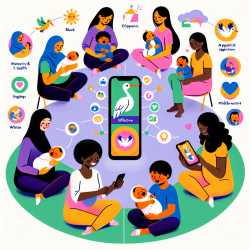As a practitioner in the field of speech-language pathology, you understand the importance of using data-driven approaches to improve outcomes for children with developmental coordination disorder (DCD). A recent focused review, "Developmental Coordination Disorder: The Importance of Grounded Assessments and Interventions" by Niklasson et al. (2018), provides valuable insights that can help enhance your practice. This blog aims to summarize the key findings and suggest practical ways to implement these research outcomes.
The Current Landscape of DCD
DCD is characterized by delayed and immature gross and fine motor development without obvious intellectual or medical causes. Despite its prevalence among school-aged children (estimated between 6-13%), DCD remains a "hidden problem" and is often neglected in developmental medicine and child neuropsychiatry.
Approaches to Intervention
The review highlights three primary approaches to DCD interventions:
- Bottom-up (Deficit-/Process-Oriented): This approach focuses on remedial sensorimotor processes to improve motor skills. An example is Sensory Integration Therapy (SIT).
- Top-down (Functional Skills/Task-Oriented): This approach teaches children to handle tasks and skills in their environmental context. The Cognitive Orientation to Daily Occupational Performance (CO-OP) is a recommended method here.
- Dynamical Systems Theory (DST): This perspective emphasizes the interaction between different subsystems for motor development, such as the child's abilities, environmental context, and task at hand.
Assessments and Interventions
High-quality assessment tools are crucial for monitoring the complex processes involved in DCD interventions. The review suggests combining bottom-up and top-down approaches to create more effective assessments and interventions.
Recommended Instruments for Children
- Sensory and Integration Praxis Tests (SIPT): Standardized for children aged 4 to 11 years 8 months, SIPT assesses sensory motor integration disorders.
- Movement ABC-2: Standardized for children aged 3 to 16 years, this test evaluates general motor skills and includes a performance part and a checklist.
- BOT-2: Standardized for children and adolescents aged 4 to 21 years 11 months, this test detects motor difficulties.
Retraining for Balance (RB)
Retraining for Balance (RB) is an umbrella term for assessments and interventions used in sensorimotor therapy (SMT). It includes:
- Vestibular assessment and stimulation
- Assessment and integration of aberrant primary reflexes
- Assessment and stimulation of auditory perception
Implementing the Research Outcomes
To implement the outcomes of this research, consider the following steps:
- Adopt a Holistic Approach: Combine bottom-up and top-down methods to address both sensorimotor processes and functional skills.
- Use Comprehensive Assessment Tools: Utilize tools like SIPT, Movement ABC-2, and BOT-2 to get a well-rounded understanding of a child's motor skills.
- Incorporate RB Techniques: Integrate vestibular stimulation and primary reflex suppression into your intervention plans.
By adopting these data-driven approaches, you can significantly improve the outcomes for children with DCD in your practice. To read the original research paper, please follow this link: Developmental Coordination Disorder: The Importance of Grounded Assessments and Interventions.










